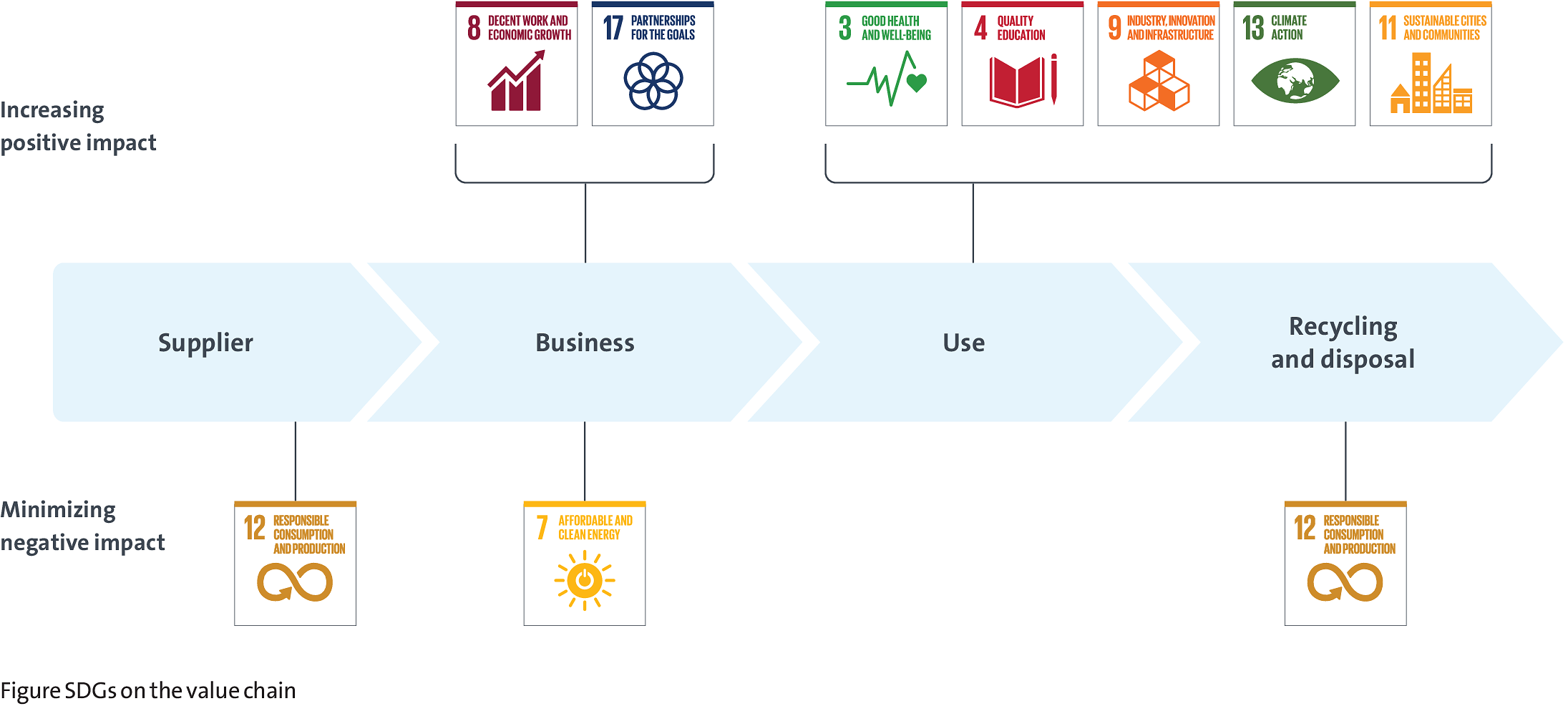Value chain, supply chain and key elements of Corporate Responsibility
Swisscom generates the bulk of its added value through its activities in Switzerland. In 2019, activities abroad accounted for 8% (prior year: 8%) of the Group’s added value from operations.
The added value statement and the distribution of added value are addressed in the Management Commentary of the Annual Report, in the “Financial review” section on page 44 ff.
Swisscom is associated with the Global e-Sustainability Initiative (GeSI) It is part of the Responsible Business Alliance (RBA) and thus indirectly affiliated with the Responsible Mining Initiative (RMI). This initiative aims to monitor the origin of conflict minerals more closely than in the past. Swisscom imports the products in question for final consumption in Switzerland. This importation has a positive and negative impact on the environment, the economy and society along the value and supply chains:
- The provision of consumer and investment items and their transport to Switzerland have ecological effects on the use of energy and resources as well as on CO2 emissions.
- The provision of infrastructure and telecommunication services plays a role in ensuring Switzerland’s economic development and competitiveness.
- Using Swisscom services offers added value to customers but also entails certain technical and social challenges.
- Creating and maintaining jobs in Switzerland and within the supply chain has social and macroeconomic implications.
Swisscom’s supply chains for direct suppliers and subcontractors primarily cover Europe, the United States and Asia. They are part of the electronics sector, particularly in the entertainment electronics, data processing hardware and network equipment segments. The raw materials contained in Swisscom’s various products come from a wide range of countries and regions. Questions are increasingly being raised on the origin of the raw materials used and the associated environmental and sociological risks.

Swisscom assesses the effects on the environment, economy and society mentioned above according to their importance. It also involves stakeholder groups in the assessment, enabling strategic priorities to be incorporated into its work.